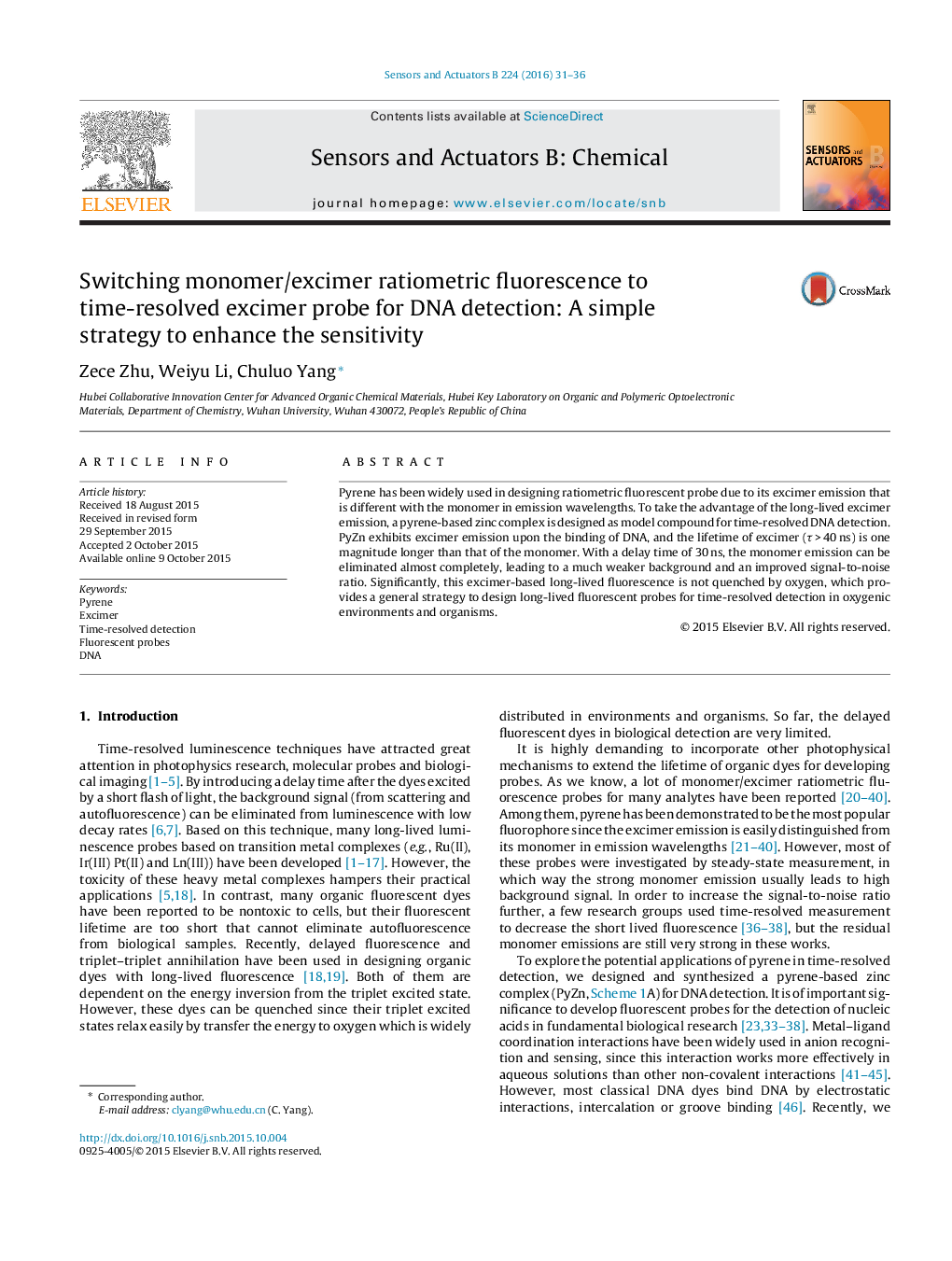| Article ID | Journal | Published Year | Pages | File Type |
|---|---|---|---|---|
| 750457 | Sensors and Actuators B: Chemical | 2016 | 6 Pages |
Pyrene has been widely used in designing ratiometric fluorescent probe due to its excimer emission that is different with the monomer in emission wavelengths. To take the advantage of the long-lived excimer emission, a pyrene-based zinc complex is designed as model compound for time-resolved DNA detection. PyZn exhibits excimer emission upon the binding of DNA, and the lifetime of excimer (τ > 40 ns) is one magnitude longer than that of the monomer. With a delay time of 30 ns, the monomer emission can be eliminated almost completely, leading to a much weaker background and an improved signal-to-noise ratio. Significantly, this excimer-based long-lived fluorescence is not quenched by oxygen, which provides a general strategy to design long-lived fluorescent probes for time-resolved detection in oxygenic environments and organisms.
Graphical abstractA pyrene-based zinc complex was used for time-resolved DNA detection to decrease the interference of the short-lived fluorescence.Figure optionsDownload full-size imageDownload as PowerPoint slide
